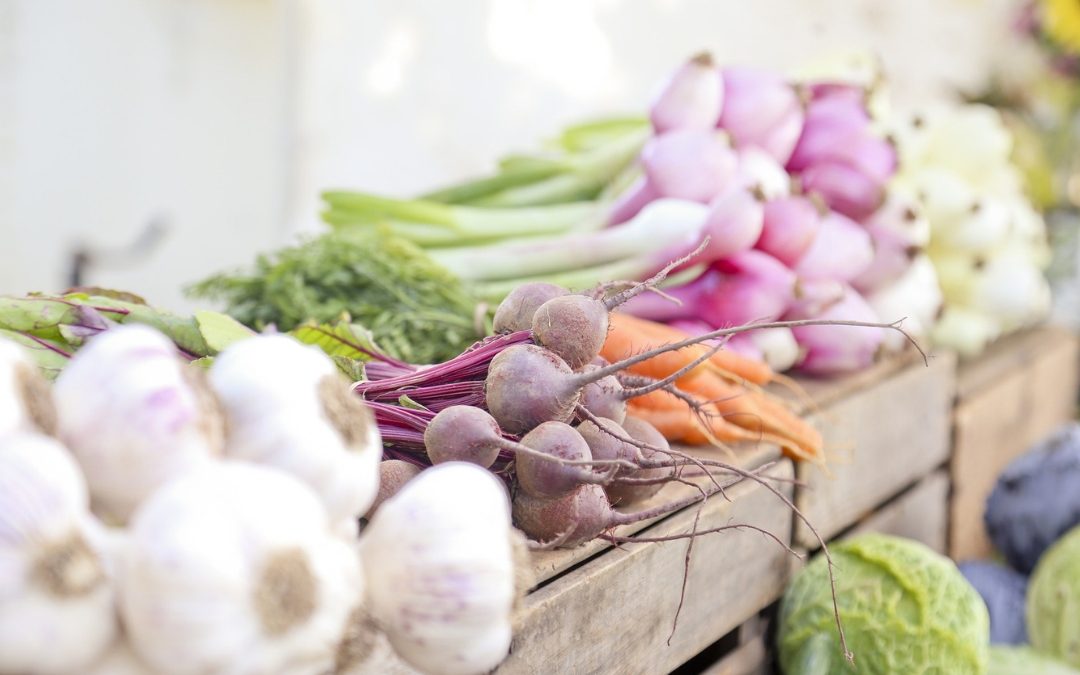
Health starts with a balanced diet
Why is it so important to have variety in our diet?
Because there isn’t any one type of food that contains all essential nutrients. Therefore, each type of food is important in its own way and each nutrient has specific functions. To have good health, our body needs each of them in the right amounts.
Here is a classification of food according to their nutritional content. You must consume them in specific amounts each day to have a balanced diet.
Fruit
Whole fruit is an important source of vitamins, minerals and fiber.
Taking into account the nutritional value, we should have at least three pieces of fruit per day, preferably fresh fruit. It is important that one of them is rich in vitamin C.
Dry fruit (plums, chestnuts, raisins and dates) is characterized mostly by having less water content. It has all the rest of the nutrients and higher caloric content.
Greens and vegetables
Vegetables are an important source of vitamins, minerals, fiber and antioxidants. That is why daily intake is a must.
The best way to benefit from all their nutrients is eating them raw: individually or in salads. Roasted or grilled is also a delicious choice. If we boil them, we can use the water to prepare soups or purées because the water contains many of the vegetables’ minerals. If we eat steamed vegetables, we keep most of the nutrients.
The recommendation is to eat at least 300gr per day (2 portions); however, 400gr of vegetables per day would be better, prioritizing seasonal varieties. Preferably, one of the portions should be raw, for example in a salad and another portion should be cooked, following the recommendations to ensure losing the least amount of nutrients possible.
Milk and dairy products
Dairy products (milk, yeast milk, fresh yogurt, cheese, cream, etc.) are a vital source of high-quality proteins: lactose, vitamins A, D, B2 & B12. They are an excellent source of calcium, important in bone and teeth formation as well as osteoporosis prevention.
Fresh yogurt and other yeast milks are considered probiotics, which have several positive effects:
- Improve immune response
- Reduce problems due to bad lactose absorption
- Protect the bowels against pathogenic microorganisms
For those who do not consume dairy products, the USDA mentions the following foods that contribute toward calcium intake: kale leaves, calcium-fortified juices or smoothies, breads, cereals, rice or almond milk, canned fish, soybeans, other soy foods, such as tofu, soy yogurt, and tempeh, and some leafy greens including collard and turnip greens, kale, and boo choy.
We should have 2 to 4 dairy portions a day, according to our age and other physiological factors.
Skimmed dairy products are better for adults because they have less energy content, saturated fat and cholesterol. This recommendation is especially important in the case of people who are overweight or obese and/or have heart problems.
Red or White Meat
Meat is a great source of high biologic value proteins, vitamin B12, iron, potassium, phosphorus and zinc. Due to its saturated fat content, it is very important to choose lean cuts and remove the fat before cooking it.
Meat has high levels of bioavailable iron and also increases iron absorption from cereals or legumes. So, by combining these kinds of foods, we can have a more nutritious meal.
It is convenient to have 3 to 4 weekly portions of meat, prioritizing lean pieces.
Processed meats like sausages and cold cuts should only be eaten very occasionally, because they have large amounts of saturated fat, cholesterol and sodium which affects our cardiovascular system.
Fish & seafood
Fish and seafood are excellent sources of high-quality protein, vitamin D and iodine.
They are rich in omega-3 polyunsaturated fatty acids. Omega-3 polyunsaturated fatty acids are essential; our body cannot produce them and we have to include them in our diet. We find them mostly in bluefish, tuna, herring, sardine, mackerel, salmon, eel, sea bass and oysters. These fatty acids reduce “bad” cholesterol (LDL), lower triglyceride levels and are precursors of substances that exert an important preventive action against cardiovascular diseases.
Seafood is a great source of vitamins (B1, B12) and minerals such as phosphorus, potassium, iron, iodine, fluorine and zinc and it is high in protein and low in sodium, calories and saturated fat.
The recommendation is to eat three to four portions of fish a week.
Eggs
They have great nutritional value: they provide high-quality protein, vitamins (A, D y B12) and minerals (phosphorus y selenium).
The color of the eggshell (white or pale brown) does not change the nutritional value. Having three to four eggs per week is a gastronomic alternative for meat.
Legumes
Beans, peas, chickpeas, broad beans and lentils provide carbohydrates, fiber, vitamins and minerals. They are a good source of protein and if we mix legumes and cereal, we have a higher quality protein intake.
We should not consume them only during winter. A good option during the summer is having them in salads.
They can also be taken in weight loss diets, because they provide the sensation of satiety. You should control the use of added fats and oils during preparation.
Legumes’ role in the prevention of colon cancer and the reduction of cholesterol levels is remarkable. It is recommended that we consume at least 2 to 4 servings (60-80gr raw portion, 150-200gr cooked portion) of legumes per day.
Cereals/Grains
Bread and cereals are an essential part of a healthy diet. They are good sources of fiber, carbohydrates, protein and a wide range of vitamins and minerals and an important source of energy. This includes bread, pasta, rice and cereals. Whole foods (pasta, rice, bread, flour) are richer in fiber, vitamins and minerals than refined ones.
Nuts
The main characteristic of nuts and dried fruit is their high energy content and their important contribution of unsaturated fatty acids and fiber. They are a good alternative for proteins and lipids from vegetable sources.
The fat content of almonds, hazelnuts, cashews, pine nuts, pistachios and walnuts are mostly unsaturated, this is what helps them control the levels of triglycerides and cholesterol in blood.
Nuts are rich in linolenic acid, which has a very beneficial effect on the heart. Nuts are also an extraordinary source of vitamin E, which has antioxidant effects. In addition, due to their relatively high vegetable fiber content, they not only help regulate intestinal transit, but can also reduce intestinal disorders.
The recommended nut intake,for healthy adults with no excess weight, is between 2 and 4 servings per day. One serving weighs 20-30gr, (net weight, without shell).
Sugar, sweets and sugary or sweetened drinks
Sugar and honey are known for providing energy but they are superfluous and not necessary. Their consumption must be moderate. Their high intake creates excess weight and tooth decay.
We should moderate the intake of products rich in simple sugars.
Oils and fats.
Fats are essential for our health because they intervene in the composition of cell membranes and nuclear structures. Even so, fats and oils should be consumed in moderation, due to their high caloric content.
We must limit the consumption of saturated fats of animal origin present in meat, sausages, bakery products and pastries. Avoid excessive intake of margarine. During the manufacturing process, “trans” fatty acids are formed, which can be a risk factor for cardiovascular diseases.
Vegetable oils, such as virgin olive oil, are healthier. Consuming virgin olive oil is recommended, since it is rich in monounsaturated fats and antioxidants. Use both for cooking and dressing.
Water
Water is essential to life.
All of our body’s chemical reactions take place in an aqueous (water) solution. In addition, an adequate consumption of water helps prevent constipation and normalize the intestinal transit.
Planning a healthy diet may seem complicated, but it doesn’t have to be; consistently and systematically following some basic guidelines will make the difference.
By learning about the food groups I have listed, you can start making progressive changes, one step at a time, to improve your eating habits.



